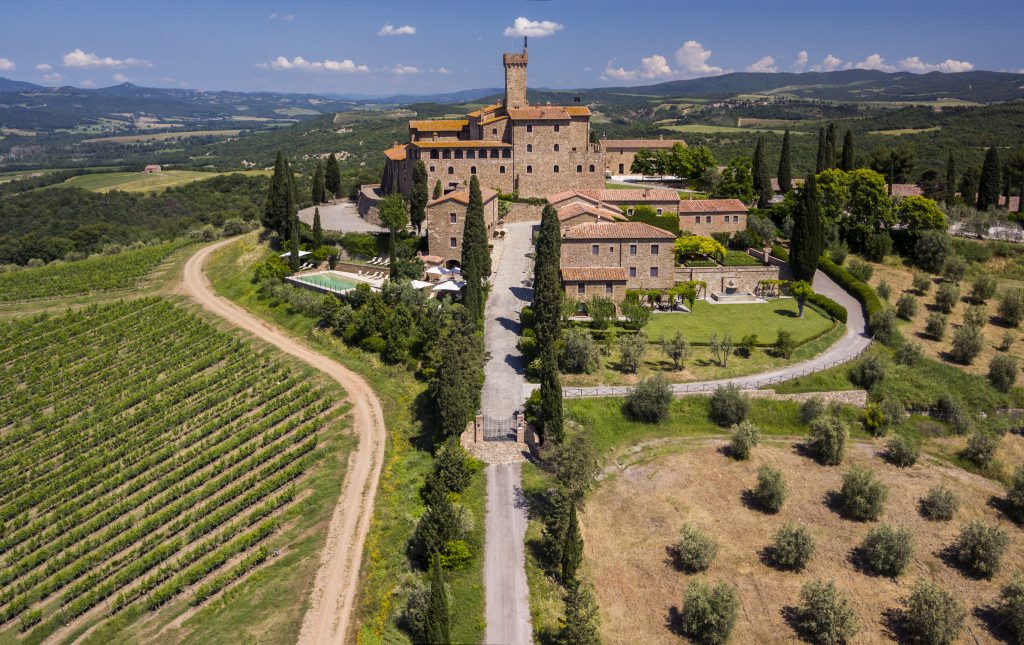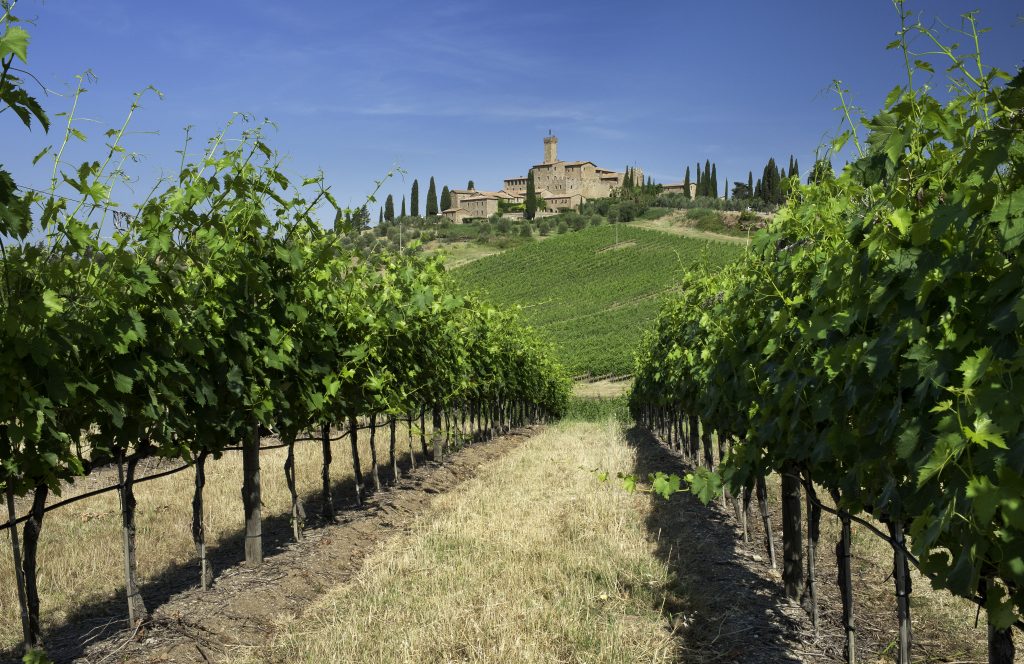This website uses cookies so that we can provide you with the best user experience possible. Cookie information is stored in your browser and performs functions such as recognising you when you return to our website and helping our team to understand which sections of the website you find most interesting and useful.
Banfi: ‘people always want you to sell more, but you have to say no’
Since Cristina Mariani-May, a scion of the highly successful, business-minded, Italian-American Mariani family took over as CEO of Banfi in 2018, the company has been through a root and branch change to focus onto its more premium products. Arabella Mileham talks to Mariani-May about the success of the process, and where the company is heading.

Banfi was founded in New York City in 1919 as a US-based import company of fine wines by Cristina’s grandfather, Giovani F. Mariani, but it was his sons, John and Harry, who expanded the business into what it has become today. In the 1970s, they arrived in Tuscany in search of a Brunello to import from Montalcino – but found instead an isolated rural region with a few dozen producers that was simply not set up for this kind of export. So instead, they created a flagship Brunello that came to both define and elevate the region’s terroir which is now the largest contiguous wine estate in Italy, with nearly 7,000 acres.
A decade later, the family acquired a 12th century Castello set within their vineyards, which they transformed into a 14-room luxury Relais & Chateaux property, Castello Banfi, along with its prized vineyards which produce premium wine. Further vineyard acquisitions in Piedmont and Maremma, and the continued expansion of their import company saw them grow into a vast, global empire of winemaking and selling.
However, Mariani-May took the decision to refocus, not only the current portfolio, but also to “focus on the financial health of our company and preparing our company for the future”.
Challenging
This proved a “challenging process”, she told db in an exclusive interview last month, and something which required the self-discipline to eliminate a lot of brands in the portfolio.
“That’s tough, because there’s always a market there’s always a consumer, you never want to let go of things and then there’s always revenue there, ” she explains, however the company had been leaning on a 80/20 rule, “where you do 80% of your business with 20% of your products.”
It was mostly everyday wines and volumetric wines that didn’t generate much profit margin that were streamlined away, something she describes as “a little scary, for us, and for me.”
“Sometimes you ask ‘Is this going to be enough? Is it enough for global salesforce? Is it enough for the consumer?’” she admits.
The evolution of the portfolio took two years, with brands evaluated on a case-by-case basis, with “a disciplined effort and an end goal” in mind, a mixture of refocusing on its more important brands, particularly in the affordable luxury bracket, while withdrawing “promotional dollars and effort” and not renewing contracts on its agency brands.
“People always want you to sell more, and you have to say no,” she notes.
Covid
No sooner the pruning had been completed than Covid struck – and consumers naturally started to premiumise on their own accord. “It’s not something we could have predicted,” Mariani May notes, but the timing of the new strategy proved fortunate and by 2022, the portfolio was complete, and by 2023 already seeing positive momentum.
“Its beginning to hit our bottom line, which is wonderful, because then we can invest more in brand-building and investment, more in sales agents and activity. And that’s important as it’s all about brands.”

But as she argues, “it’s not all £80 Brunello di Montalcino… our white, sparkling, Rossa, de Montalcino and especially Chianti are all doing very well.”
Indeed, sales of Chianti in the US have “gone through the roof”, with Nielsen showing the company’s Chianti Superiore up 47% in the latest 26 weeks, while sparkling wine is also gaining traction as people continue to explore the Italian sparkling category following the success of Prosecco.
Indeed under her management, revenue has grown 15%, driven by the acclaimed 2019 vintage Brunello. “By strategically positioning Banfi’s offerings in the luxury tier, Mariani May has solidified the brand’s position in the market, with wines priced about $15 sterling growth,” a statement from the company says.
What’s next?
So, what’s the plan for the next few years?
Eno-tourism is a category she sees as remaining strong in the post-pandemic world and the next step is to continue to continue to build the hospitality business on the Castello Banfi estate, which comprises the 14-room luxury hotel, two restaurants, an enoteca, and a museum of Roman-era glass bottles, in addition to the vineyards. Mariani-May says the team will continue to invest in “the experience” of Castello Banfi and “parlay that experience back into the brand, and what people see and experience when they have a bottle of Banfi.”
With the alcoholic drinks industry shrinking globally, this is becoming increasingly important, she notes. “It’s not just about the label on the shelf and the price – it’s about the experience – and that’s through social media, events, education, visits and messaging,” she explains.
Consumers, she adds, want authenticity, story, terroir and background “and Banfi is a tied and true brand, founded by my father from scratch – we didn’t purchase an estate, it was a virgin estate that we built, researched and developed from the ground up. And that’s kind of a unique story, especially being Italian-American.”
And while wine sales are not going to “evaporate”, there has already been a level of reduction offered across the on and off-trade. “We already see wine lists getting smaller, shelf space getting smaller, so we really have to win within this sector and how we do that is through education, in people, in telling the story and in the experience.”
A big opportunity is likely to come through both fragrant white wines (such as its Principessa Gavia from Piedmont), the sparkling wines and, as people continue to drink lighter reds, wines such as Rossa di Montalcino, Mariani-May notes.
“Brunello will always be a staple, but there’s our Chianti’s and our affordable Super-Tuscans like Balnero and Rossa di Montalcino – there’s a lot in the portfolio that can still be tapped,” she says.

The opportunity to build diversity into the wines from Montalcino, and thereby expand the Super Tuscan category comes in the wake of recent changes introduced by the Consortio, which will boost the production of Rossa de Montalcino, a dry, fruity red wine which tends to be released younger than its more famous sibling, Brunello.
“We want to introduce people Tuscan wines, but not everyone – and depending on where the global economy goes and the political situation – is always going to be drinking Brunello, let’s be honest. So I think Rosso di Montalcino is the perfect opportunity [to do that], and it’s unique to the terror of Montalcino,” she says.
Banfi are also investing more in Bolgheri, in the Maremma. “We’re getting a big push behind our Belnero Toscana IGT , which is a Sangiovese, Cabernet Sauvignon and Merlot blend.”
The wines at this $30 mark, she notes are “going to continue to win on wine lists and by the glass”.
“Because what we’re seeing a lot is more by the glass offering, as people are less likely to invest in a bottle or they’re having a cocktail. So we really want to target that ‘by the glass’ market.”
“I think we need to try to win within that price range.”
Related news
Banfi announces new chief commercial and strategy officer
The Banfi Brunello Ambassador Club
Q&A: Cristina Mariani-May and Enrico Viglierchio shake things up and forge ahead

